A new development regarding last week’s onboard fire between HNL and PDX shifts the focus to Hawaiian Airlines’ first-class entertainment tablet and crew. The device involved may have been provided by the airline itself rather than a passenger-carried item. The potential involvement of an airline-issued tablet raises questions about the safety of using such devices on flights. The entertainment tablet trend is one that began with the introduction of the Alaska Airlines DigiPlayer decades ago. This situation may now prompt the industry to reconsider the waning practice of distributing tablets to passengers.
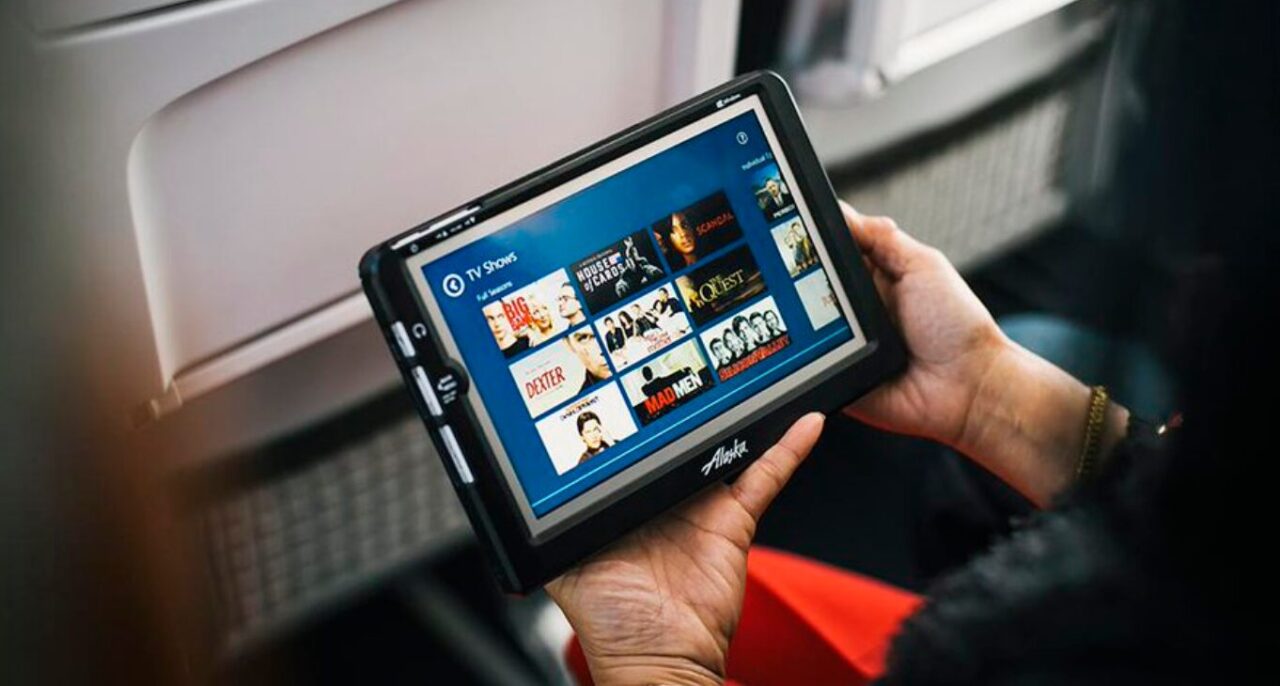

The birth of in-flight entertainment tablets.
Using tablets for in-flight entertainment traces back to Alaska Airlines, where a baggage handler named Bill Boyer invented the Digiplayer in the early 2000s. It was a groundbreaking idea at the time, allowing passengers to watch movies and enjoy other entertainment options through a custom tablet instead of requiring the installation of seat-back entertainment screens. The success of Boyer’s innovation spread, influencing other airlines, including Hawaiian Airlines, which Alaska now owns, to adopt similar practices. This began the tablet-based inflight entertainment trend that evolved across the industry.
Interestingly, Bill Boyer later led Hawaii’s Mokulele Airlines, bringing his entrepreneurial journey full circle within the Hawaii airline industry. While his DigiPlayer innovation marked the beginning of tablet-based inflight entertainment, especially in First Class, this practice is far less common today.


Alaska Airlines ended its use of the DigiPlayer in 2015 and has since moved away from entertainment tablets entirely. Recent incidents, such as the fire on HA Flight 26, raises questions about the safety and future of airline-provided tablets. Hawaiian Airlines’ latest Boeing 787 Dreamliners, for example, feature built-in entertainment screens for all passengers. Seat-back screens started in the 1990s and have had on-and-off popularity among airlines.
On-board fire incident details revisited.
Michael and Casey Rebstock, flying first class, noticed smoke emerging from under Michael’s seat during the final 30 minutes of their flight to Portland. Initially thought to be a personal device, it is reported that the fire likely came from a complimentary tablet provided by Hawaiian Airlines for in-flight entertainment. As an electrical engineer, Michael suspects the tablet, left by a previous passenger, was crushed when he adjusted his lie-flat seat, leading to a “thermal runaway” reaction in the lithium-ion battery that caused the fire.
Hawaiian Airlines’ spokesperson stated they are examining whether the device involved was one of their provided tablets.
Was the flight crew’s response time too slow?
The passenger, who had smoke from under his seat, noted that the flight attendants appeared unprepared. According to him, finding a fire extinguisher took about five minutes.
Editorial comment: It is hard to deny the allegations of the passengers who experienced the fire first hand and equally challenging to think that the Hawaiian Airlines’ flight crew could be as inept as is being alleged. We have known many of these people and seen them work for years, and it does strike us as odd.
Eventually, another passenger reportedly used metal tongs obtained from a flight attendant to remove the burning device, according to a witness. Though the crew had available fire containment bags, they reportedly did not use them until after the fire was controlled. This raised concerns about whether the crew was fully trained for such incidents, especially considering the FAA’s guidelines on lithium battery fires.
Enhanced airline fire safety protocols.
The Hawaiian Airlines fire highlights safety concerns about in-flight entertainment devices provided by airlines and passengers’ personal devices. Airlines typically advise that if a device becomes lodged in a chair, passengers should get the help of cabin crew rather than attempting to remove it themselves.
In a recent experience this month, BOH editors we were flying the identical Hawaiian A330 between Papeete and Honolulu. A cabin crew announcement was made specifically asking passengers to seek help from cabin crew if any devices got lost in a seat.
A moment for airline industry reflection.
This incident with Hawaiian Airlines Flight 26, which thankfully resulted in no injuries, serves as a wake-up call for airlines to revisit emergency procedures and for passengers to be mindful with the devices they bring on board.
Get Breaking Hawaii Travel News


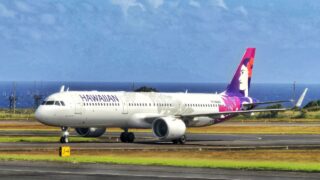
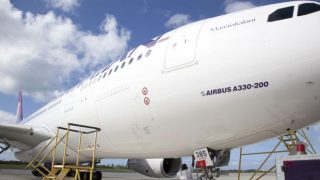
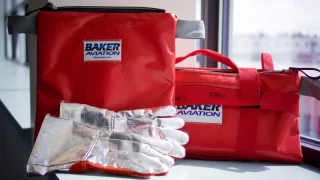
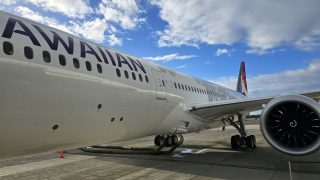
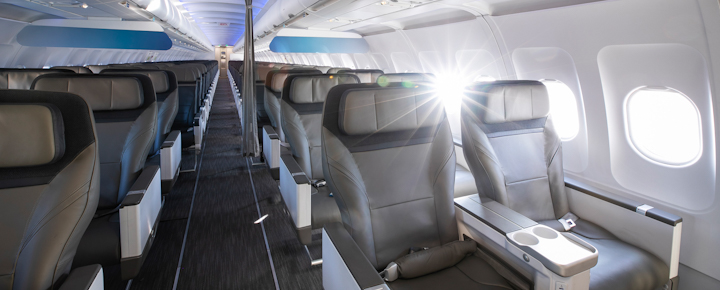
This sounds a bit fishy. HA collect those tablets and account for each one before landing. I can’t see how one could have fallen beneath the seat and gone unaccounted.
Lithium Fire Guard is the solution. These FAA said these bags are dangerous and Baker made claims of FAA endorsement (you can see it on their site) which the FAA came out and debunked. These containment bags are incredibly dangerous. Check out Lithium Fire Guard’s PG100 for the only UL5800 approve solution.
Seems strange that a tablet was left by a previous passenger. 1st class as usually reset for next passengers, and I’ve had attendants wait for return of tablet and mark it off
Are you sure this was a battery or device problem. If the device was connected to the airlines Wi-Fi network I suppose artificial intelligence (AI) could have told the device to keep charging if plugged into a seat console usb power supply port. Who really controls this (AI ) when internet is picked up by gps satilites and relay the signal to some wireless server. Did some computer cause this. Who really knows.
I wonder how many posters are aware of Hawaiian Training? When posters seem to overlook that smoke and fumes are more likely to injure people in flight than fire itself.
I also find it funny that Personal devices and in seat power “are here to stay”. So were in-seat ashtrays….
Well here’s another device the airlines consider a toy, but for an EE to diagnose the problem. Good thing terrorists haven’t used the devices on board. Large electronic devices should be banned on planes due to their heat functions.
Airplane Attendants typically have a set routine during the flight. Prior to takeoff, the Attendants they instructed on how to use the seat belt, where the emergency exits are, the under the seat floatation device is located, and about the oxygen mask usage if deployed. Never have I been advised about the location or usage of the fire extinguisher. I do know the location of the rear and forward extinguishers by being observant. I am very surprised, and also worried, that the HAL Attendants were in disarray during this emergency situation. I haven’t traveled on HAL, after hearing of this incident I have more reasons not to. There’s No 3 strikes and your out for me. With Airplanes, all too often the First ends in Unrecoverable Tragedy!
Cool it Ernie. Passengers are not allowed to use any safety device on the airplane unless instructed by a crew member. So if your assistance is needed, they will instruct you. The FA’s are only there for your safety. Not to serve you snacks. They are all well trained and know their jobs backwards and forwards.
Jim O, I certainly don’t have any anticipation of using them. Apparently the Attendants were either unsure of the FA locations or they were not confident of what to do. When it takes 5 minutes to act in an Emergency Situation, there is a failure in the training.
I’m actually surprised to see the comment that the tablet was”left by a previous passenger…” I have flown Hawaiian first class many times and it always seemed that the crew was meticulous about collecting and counting the tablets.
There is a simple three step fix for this.
1) as Hawaiian supply a power lead the lithium batteries could be removed from the tablets by an authorized shop if the manufacturer. This would also save some weight.
2) refresh train flight attendants on fires procedure
3) move to 787,s as soon as Boeing can supply.
However, there would remain an issue. Should passengers be allowed to connect tablets, phones, laptops or other devices with lithium batteries to charge in flight?
See my post. It’s already done. Passenger devices are here to stay. Fire blankets and other sturdy containers need to be on every plane with training.
No more built in screens. Worldwide free high speed internet world-wide at every seat. Thousands of Low orbit satellites already in service. More coming every month. Bring your own device. Seat back holder and power for every passenger. It’s here now on new aircraft in service. Big video servers on board for movies etc. Saves lots of fuel. Less weight and drag. Probably safer than airline-provided devices. Win-win.
As a flight attendant for another carrier, I can assure you of this fact. Containment Bags are used to isolate and contain battery powered devices only After the fire has been extinguished and the device has been Cooled down.